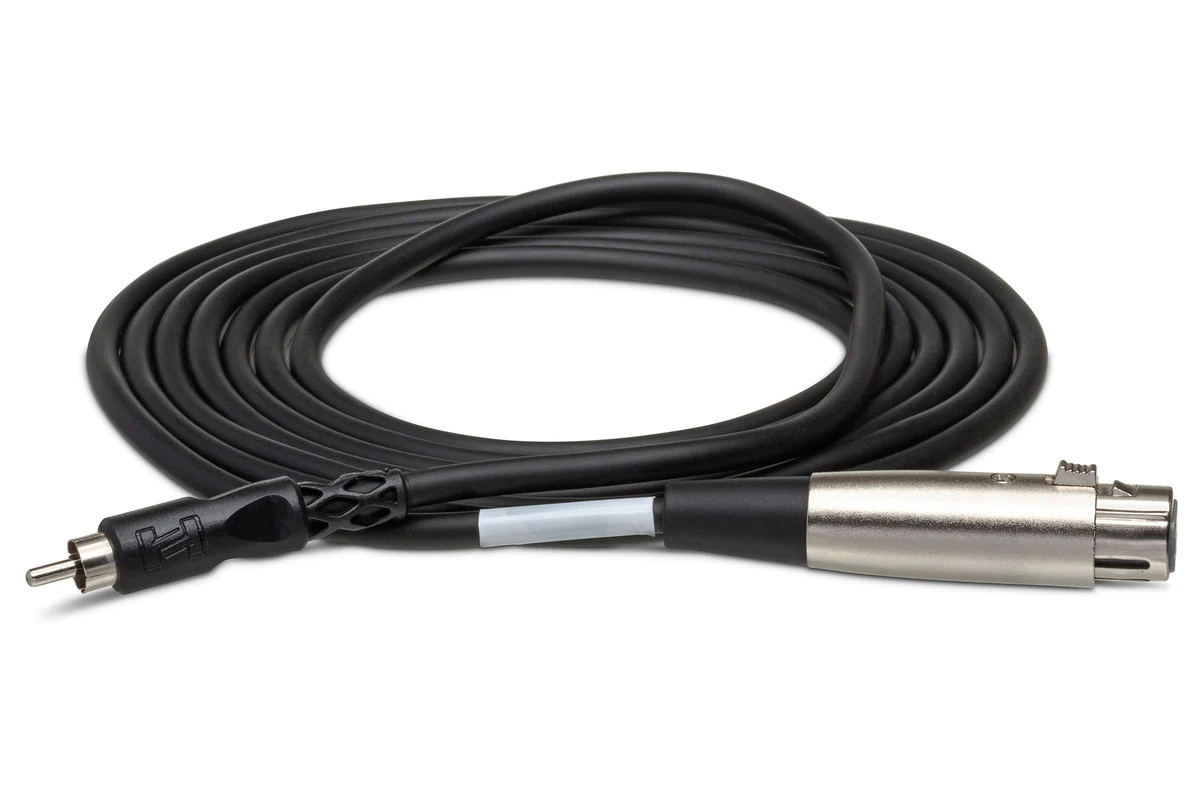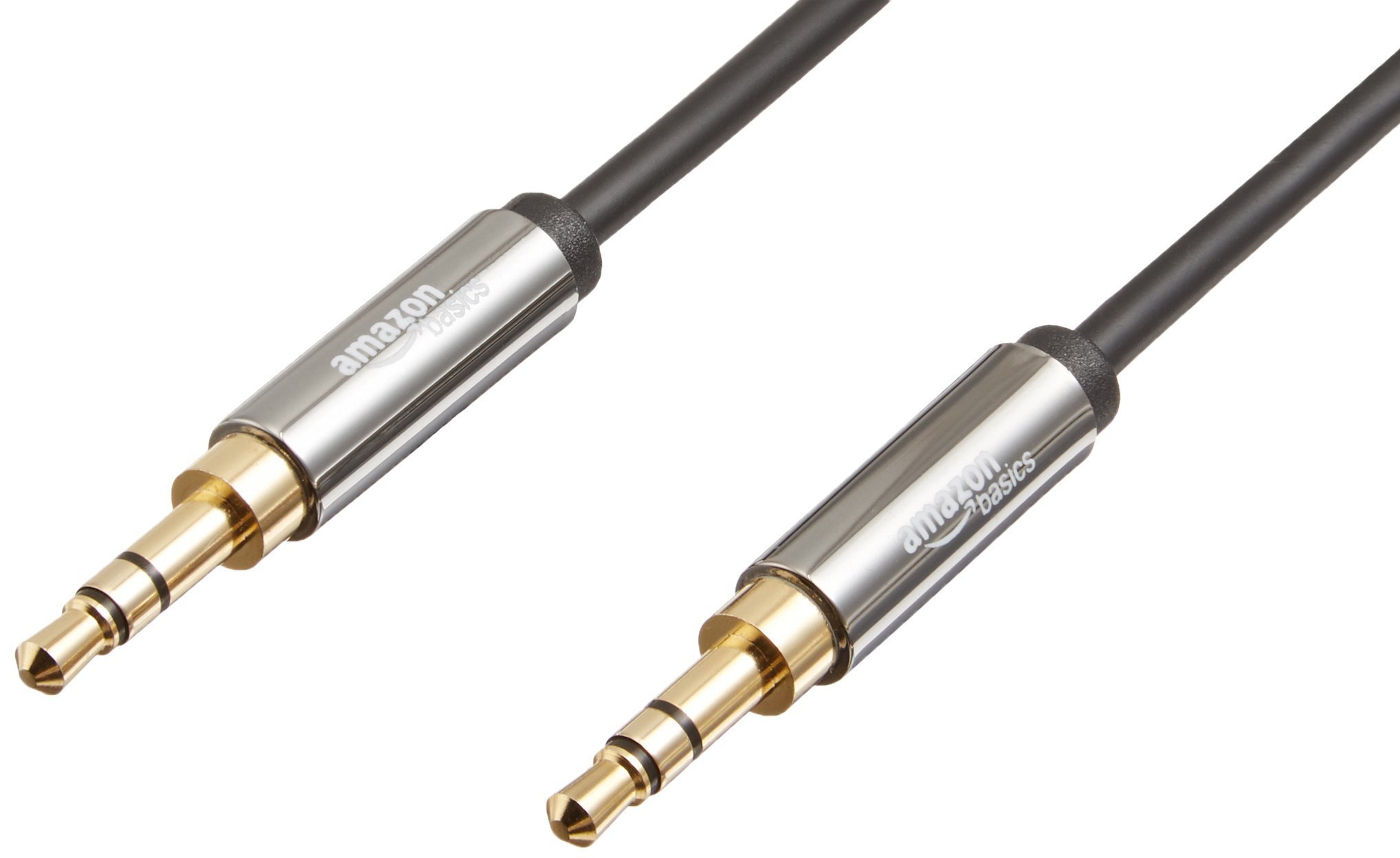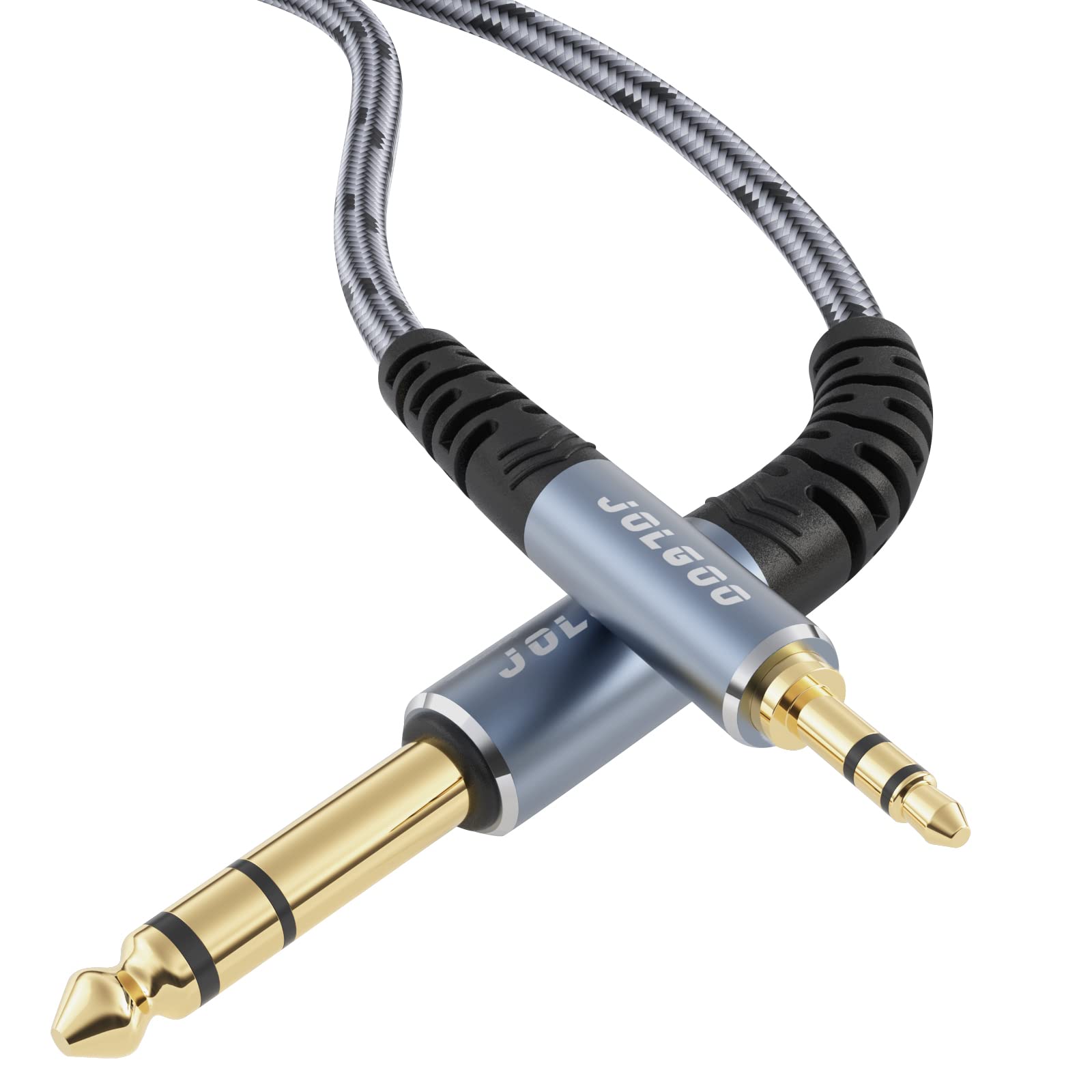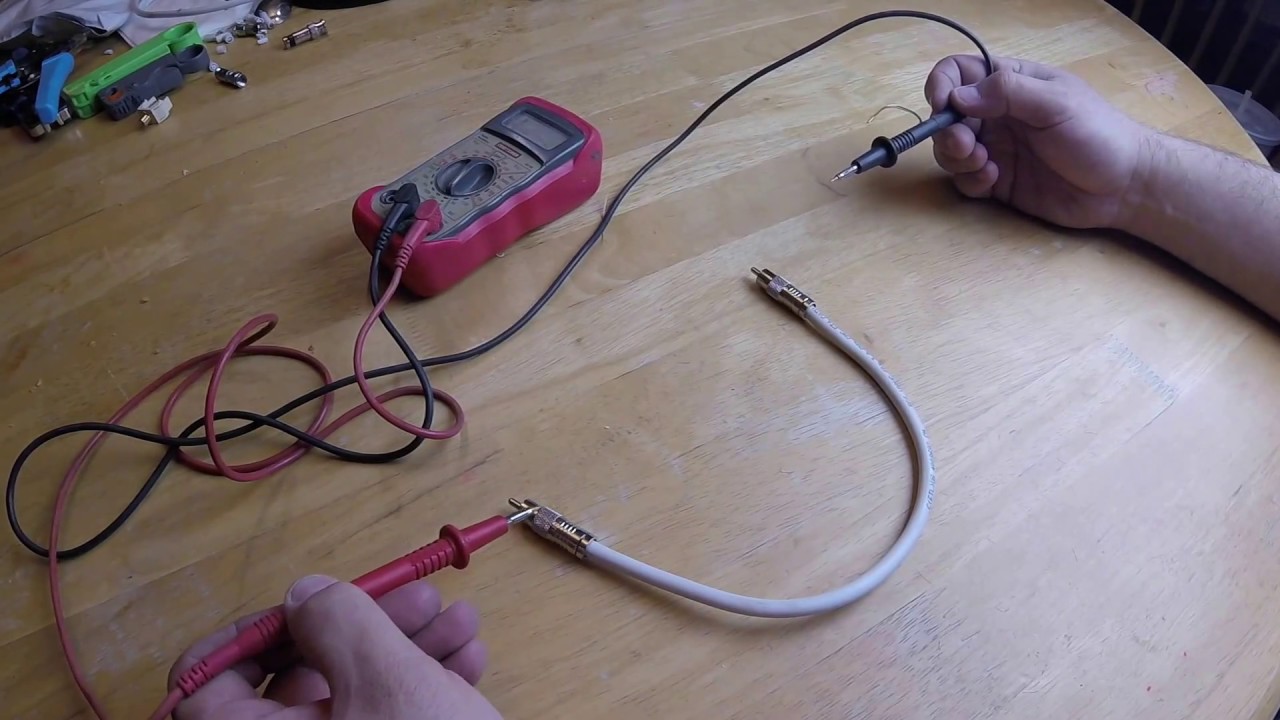Home>Production & Technology>Audio Cable>How To Properly Coil Audio Cable


Audio Cable
How To Properly Coil Audio Cable
Published: December 20, 2023
Learn the proper way to coil and store your audio cable with our step-by-step guide. Keep your audio cable tangle-free and prolong its lifespan.
(Many of the links in this article redirect to a specific reviewed product. Your purchase of these products through affiliate links helps to generate commission for AudioLover.com, at no extra cost. Learn more)
Table of Contents
- Introduction
- Why Properly Coiling Audio Cables Is Important
- Step 1: Gather the Necessary Supplies
- Step 2: Straighten the Cable
- Step 3: Create a Small Loop
- Step 4: Begin Coiling the Cable
- Step 5: Maintain Tension While Coiling
- Step 6: Continue Coiling Until the End
- Step 7: Secure the Coil with Velcro or Cable Ties
- Step 8: Store the Coiled Cable Properly
- Conclusion
Introduction
Welcome to our comprehensive guide on how to properly coil audio cables. As an audio enthusiast or professional, you know the importance of keeping your cables organized and well-maintained. Improperly coiled cables can lead to tangles, knots, and even damage to the inner wiring, affecting the overall sound quality and lifespan of your audio equipment.
Learning the proper technique for coiling audio cables not only ensures their longevity but also saves you valuable time and frustration when setting up or packing away your equipment. In this article, we will walk you through the step-by-step process of coiling audio cables correctly, so you can enjoy hassle-free setups and optimal audio performance.
Whether you are a musician, sound engineer, podcast host, or simply someone who wants to improve their cable management skills, this guide is for you. We will cover everything from the necessary supplies to storing your coiled cables properly. So, let’s dive in and master the art of coiling audio cables!
Why Properly Coiling Audio Cables Is Important
Properly coiling audio cables may seem like a trivial task, but it plays a vital role in ensuring the longevity and performance of your audio equipment. Here are some reasons why it is important to coil your audio cables correctly:
- Prevents Damage: Coiling audio cables properly helps prevent unnecessary strain and stress on the inner wiring. When cables are tangled or knotted, they can easily become damaged, resulting in signal loss, static, or even complete cable failure. By coiling cables correctly, you minimize the risk of damage, ensuring consistent audio quality and reliable connections.
- Easy Setup and Packing: Properly coiled cables are easier to handle and manage during setup and teardown. When cables are neatly coiled and organized, you can quickly identify the right cables for the task at hand, saving you time and effort. Additionally, neatly coiled cables take up less space and are easier to store, making them more portable and convenient for gigs, events, or studio setups.
- Professional Appearance: Coiling audio cables properly not only enhances their functionality but also contributes to a professional and organized appearance. Whether you’re performing on stage, recording in a studio, or conducting a live event, a neat and well-coiled cable setup instills confidence and credibility in your work.
- Prevents Tangles and Knots: Tangled cables are a nightmare to untangle, wasting precious time and causing unnecessary frustration. By coiling your cables properly, you minimize the chances of them getting tangled or forming knots. This saves you from the hassle of unravelling a mess of cables and allows for smooth and efficient cable management.
- Prolongs Cable Lifespan: A well-coiled cable is less prone to wear and tear. By avoiding twists, kinks, and sharp bends, you extend the lifespan of your audio cables. This means you won’t have to replace them as frequently, saving you money in the long run.
Now that you understand the importance of properly coiling audio cables, let’s move on to the step-by-step process of achieving a perfectly coiled cable every time.
Step 1: Gather the Necessary Supplies
Before you begin coiling your audio cables, it’s important to gather the necessary supplies. Having the right tools and accessories will make the coiling process smoother and more efficient. Here are the supplies you will need:
- Audio Cables: Obviously, you’ll need the audio cables that you want to coil. Make sure they are in good condition and free from any knots or tangles.
- Cable Wraps or Velcro Straps: These fasteners are essential for securing the coiled cable and keeping it neat and organized. Cable wraps are reusable and adjustable, while Velcro straps provide a secure and reliable hold.
- Cable Ties or Twist Ties: If you don’t have cable wraps or Velcro straps, you can use cable ties or twist ties as an alternative. These will help secure the coiled cable and prevent it from coming undone.
- Surface or Stand: Having a clean and stable surface to work on is important. You can use a table, floor, or cable winding stand to keep the cable steady while you coil it.
- Patience and Care: While not a physical supply, patience and care are essential when coiling audio cables. Take your time and handle the cables gently to avoid unnecessary strain or damage.
Once you have gathered all the necessary supplies, you are ready to move on to the next step: straightening the cable. By ensuring your cables are straight and free from twists, you’ll create a solid foundation for a well-coiled cable. Let’s proceed to Step 2!
Step 2: Straighten the Cable
Before you start coiling your audio cable, it’s important to straighten it out. Straightening the cable ensures that there are no twists or kinks that could affect the overall integrity of the coil. Here’s how you can straighten your cable:
- Hold one end of the cable firmly with one hand.
- With your other hand, begin running your fingers along the length of the cable, starting from the end you are holding. Use a smooth, even motion to straighten out any twists or tangles in the cable.
- If you come across any stubborn kinks or knots, gently work them out by bending the cable in the opposite direction of the kink. Avoid pulling or tugging forcefully, as this can cause damage to the cable.
- Continue straightening the cable until it is completely free from twists and tangles. Take your time during this process to ensure the cable is properly straightened.
By straightening the cable before coiling, you create a solid foundation for a neatly coiled cable. This step helps to minimize the stress and strain on the internal wires and ensures that the cable will coil smoothly without any kinks or tangles.
Once you have straightened the cable, you are ready to move on to the next step: creating a small loop in the cable. This loop will serve as the starting point for the coil. Let’s proceed to Step 3!
Step 3: Create a Small Loop
Creating a small loop at the end of the cable will serve as the starting point for the coil. This loop helps to anchor the coil and prevent it from unraveling. Follow these steps to create a small loop:
- Hold the end of the cable firmly between your thumb and forefinger.
- Bring the end of the cable back towards the cable itself, forming a small loop.
- Make sure the loop is not too big or too small. Aim for a loop that is about the size of your palm or slightly smaller.
- Hold the loop in place with one hand while you use your other hand to hold the rest of the cable.
The small loop you create will serve as a guide for creating the subsequent coils. It helps to keep the coiling process organized and ensures that the coil will remain intact without coming undone.
With the small loop in place, you’re now ready to move on to the next step: coiling the cable using the proper technique. Let’s proceed to Step 4!
Step 4: Begin Coiling the Cable
With the small loop created, it’s time to start coiling the cable. Follow these steps to properly coil the cable:
- Hold the small loop in your non-dominant hand, using your thumb and forefinger to keep it secure.
- With your other hand, begin to coil the cable by wrapping it around your hand in a clockwise direction (or counterclockwise, depending on your preference).
- Make sure to keep a firm grip on the cable as you coil it, ensuring that it wraps neatly and tightly.
- Continue coiling the cable, gradually working your way towards the other end.
- Avoid twisting or kinking the cable as you coil it. This can cause damage and affect the overall quality of the audio signal.
As you coil the cable, focus on keeping the coils close together and evenly spaced. This will help create a neat and organized coil that is less likely to tangle or come undone.
Remember to maintain a steady and controlled motion as you coil the cable. Avoid rushing or pulling too tightly, as this can lead to strain and potential damage to the cable.
Once you have reached the end of the cable, you are ready to move on to the next step: maintaining tension while coiling. Let’s proceed to Step 5!
Step 5: Maintain Tension While Coiling
While coiling the cable, it is important to maintain tension to create a tight and secure coil. By keeping the right amount of tension, you can ensure that the coil stays in place and remains organized. Here’s how to maintain tension while coiling:
- As you continue to coil the cable, maintain a gentle yet consistent tension throughout the process.
- Avoid pulling too tightly, as this can strain the cable and potentially damage the internal wires.
- At the same time, make sure not to leave the cable too loose, as this can cause the coil to come undone.
- Focus on keeping the coils evenly spaced and snug against each other. This will help create a neat and tidy coil.
- If you encounter any twists or kinks while coiling, pause and straighten them out before proceeding. This will help maintain the overall integrity of the coil.
By maintaining tension while coiling, you ensure that the resulting coil is organized, secure, and less prone to tangles or knots. This will make it easier to unravel the cable when needed, saving you time and frustration during setup or storage.
Once you have maintained tension and successfully completed the coiling process, it’s time to move on to the next step: completing the coil until the end of the cable. Let’s proceed to Step 6!
Step 6: Continue Coiling Until the End
Once you have established the proper tension and maintained a consistent coil, it’s time to continue coiling the cable until you reach the end. Here’s how to complete the coil:
- Continue coiling the cable in a smooth and controlled manner, maintaining the same technique you used in the previous steps.
- Keep the coils snug against each other, ensuring that they are tightly wound.
- Avoid overlapping or crossing the coils, as this can lead to tangles and make it difficult to unravel the cable later.
- As you approach the end of the cable, make sure to leave a bit of slack to create a final loop before securing the coil.
- Ensure that the coil is compact and neatly arranged, with no loose or sagging sections.
By continuing to coil the cable until the very end, you create a consistent and organized coil that is easier to handle and manage. The completed coil should be compact, secure, and free from any tangles or kinks.
With the coil finished, it’s time to move on to the next step: securing the coil to keep it in place. Let’s proceed to Step 7!
Step 7: Secure the Coil with Velcro or Cable Ties
After coiling the cable, it’s important to secure the coil to keep it neat and prevent it from unraveling. There are several methods you can use to secure the coil, but two popular options are using Velcro straps or cable ties. Here’s how to secure the coil:
- If you are using Velcro straps, simply wrap the strap around the coiled cable, making sure it is snug but not too tight. Secure the Velcro in place to hold the coil together.
- Alternatively, if you are using cable ties, thread one end of the cable tie through the loop of the coil, then pull it tight. Fasten the cable tie by inserting the tapered end into the head of the tie, creating a secure loop.
Both Velcro straps and cable ties offer a reliable and convenient way to secure the coiled cable. They help maintain the integrity of the coil and prevent it from coming undone, even during transportation or storage.
Remember to position the Velcro strap or cable tie towards the end of the coil, leaving a small length of cable free for easy unraveling when you need to use the cable. This allows for quick and hassle-free setup in the future.
By securing the coil with Velcro or cable ties, you ensure that your coiled cable remains organized, tangle-free, and ready for use whenever you need it.
With the coil securely fastened, it’s time to move on to the final step: storing the coiled cable properly. Let’s proceed to Step 8!
Step 8: Store the Coiled Cable Properly
Proper storage of your coiled cable is essential for maintaining its condition and ensuring it remains tangle-free and ready for use. Here’s how to store your coiled cable properly:
- Choose a suitable storage option: Select a cable bag, case, or reel that is designed to hold and protect coiled cables. Look for options that provide adequate cushioning and protection against dust, moisture, and physical damage.
- Place the coiled cable inside the storage container: Carefully place the coiled cable inside the storage container, ensuring that it fits comfortably without any excessive force or strain.
- Avoid tight bends or kinks: Make sure the cable is laid in the storage container in a way that avoids tightly bending or kinking the cable. This will prevent damage to the internal wires and ensure the cable retains its optimal performance.
- Secure the storage container: If the storage container has a lid, close it securely to keep the coiled cable protected from external elements and potential tangling.
- Label the storage container: Consider labeling the storage container with the type of cable and its length to easily identify it when needed. This can save you time and effort when searching for cables in your collection.
- Store in a cool and dry place: Find a cool and dry location to store the coiled cable, away from direct sunlight, extreme temperatures, and moisture. This environment will help preserve the integrity of the cable and extend its lifespan.
By storing your coiled cable properly, you ensure that it remains in optimal condition and ready for future use. Proper storage reduces the risk of tangles, knots, and damage, allowing for efficient setup and prolonging the lifespan of your cables.
With the coiled cable safely stored, you have successfully completed the process of properly coiling and storing your audio cable. Following these steps will help you maintain organized and tangle-free cables, ultimately enhancing your audio setup and workflow.
Remember, taking the time to coil and store your audio cables properly is a worthwhile investment that will save you time, frustration, and potentially costly cable replacements in the long run.
Now go ahead and apply these techniques to your audio cables, and enjoy the benefits of a well-coiled and properly stored cable collection!
Conclusion
Coiling audio cables properly is a crucial skill for any audio enthusiast or professional. By following the step-by-step process outlined in this guide, you can ensure that your cables are neatly organized, tangle-free, and ready for use whenever you need them.
We discussed the importance of proper cable coiling, including how it prevents damage to the cables, facilitates easy setup and packing, contributes to a professional appearance, and prolongs the lifespan of your cables. Additionally, we provided detailed instructions on how to gather the necessary supplies, straighten the cable, create a small loop, begin coiling the cable, maintain tension, and complete the coil until the end. Finally, we covered the importance of securing the coil with Velcro or cable ties and storing the coiled cable properly to keep it in optimal condition for future use.
Remember, taking the time to properly coil and store your audio cables not only preserves their longevity but also improves your overall workflow and setup experience. It’s a small but worthwhile investment that pays off in the long run.
So, the next time you find yourself faced with a daunting tangle of audio cables, refer back to this guide and follow the step-by-step process for properly coiling your cables. With practice, you’ll become proficient in this skill, saving time and frustration while maintaining the quality and performance of your audio equipment.
Now, go ahead and apply these techniques, keep your cables organized, and enjoy hassle-free setups and crystal-clear sound!











